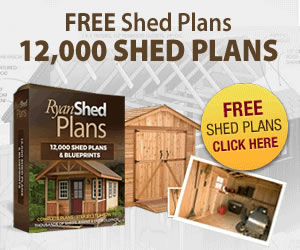Get into woodworking
As a woodworker, you must have basic knowledge of your material – wood. In order for you to come up with the best products from wood, you must have the complete 411 on the kinds of wood.
1. Hardwood
This often comes from trees such as cherry, elm, oak (English, imported, Japanese), lime, rosewood, walnut, teak, mahogany, cherry, ash and beech.
Hardwood is strong and durable. It may be more expensive than others (particularly softwood) because it has a longer life span. It is used for making furniture. Be careful in selecting hardwood. The younger the wood, the softer it is to work with. Yet, the center of the log, or what is the heart of the hardwood, it is liable to splitting into half and can also twist or shrink. Store and season the timber correctly to prevent it from doing so.
Seasoning hardwood helps in making it stronger. By storing it for a number of years before it is brought to the market, the wood becomes more durable and long-lasting.
2. Softwood
This comes from trees like cedar, hemlock, pine, redwood, whitewood, yew, spruce, larch, cedar and deal.
These are cheaper than hardwood because their deterioration rate is faster, particularly when used in an exterior setting. Softwood must be combined with wood preservers or finishes such as paint in order to protect it from natural elements.
Softwood must be treated with an anti-woodworm and anti-rot preservative. If these are going to be exposed, then they should have a lacquer finishing. This will prevent dirt from seeping through the surface. It will also emphasize the appearance, showing off the wood’s natural color.
3. Blockboard
These are often made from the strips of glued and bonded softwood, often rectangular in shape. These strips are trapped between veneers like birch. Single veneer on each side is called 3-ply. Double veneer on the two sides is known as 5-ply.
Blockboard works best for interior work because the glues used during the construction are not exactly-waterproof. It has a variety of thickness – ranging from 12mm to 32mm. Upon purchasing blockboard, they must be stored because they have the tendency to warp and twist.
4. Chipboard
This is made from softwood particles coated with resin. The particles are spread flat out and are heated together in a high pressure. Its thickness ranges from 9mm to 18,
Other types of chipboard include the flooring glade, plastic veneered, wood veneered, white melamine coated and melamine veneered.
Upon purchasing chipboards, these must be stored. These work best in interior jobs. They are also waterproof and appropriate materials for damp projects.
5. Hardboard
A versatile product that comes from softwood pulp turned into sheets. There is a finishing on one side and a textured underside. It is also available in a variety of finishes and thicknesses.
Other types of hardboard include medium, oil-tempered, perforated (pegboard), plastic faced, painted and duo faced.
Upon purchasing hardboard, this must be stored.
6. Medium Density Fiberboard
These work best for interior projects. Since it is easily exposed to wet weather scenarios, it cannot be used for exterior work. It is perfect for surfaces inside a house – like shelving and cupboards.
With its fine texture that is evident throughout the length, medium density fiberboard is often manufactured in woodwork warehouses the world over. The bonded wooden fibers are instilled together in a high pressure.
It is advised that a mask must be used when sawing medium density fiberboards. This is to prevent the inhalation of the fine dust particles. The thickness range from 9mm to 18 mm.
7. Plywood
A majority of plywood used for woodworking is imported from abroad. The bonding of the veneers is made sure to run in alternating directions in order to make up for the sheets of plywood. These are bonded on each side of the piece so the tension remains balanced.
Basic number of sheets in plywood is three. This is the 3-ply. When another sheet is added in each side, then this becomes the stronger ply also called the 5-ply. By repeatedly conducting the same technique, plywood comes in different forms.
But bear in mind that this procedure can lessen the tendency of warping. Plywood may still twist or warp because each veneer sheet is not completely identical though. Another reason why warping occurs is heat and water penetration.
Different types of plywood are standard, wood faced and plastic faced.
When storing plywood, make sure that the sheets are flat in order to prevent twisting. The sheets come in various thickness ranging from 4 mm to 18mm.
WoodWorking Related Articles
- Antique Woodworks
- How To Be A Professional Woodworker
- Online Woodwork Shops
- Value Of A Woodwork
- What Is Woodworking
- Woodwork Appraisal
- Woodwork Bench
- Woodwork Courses
- Woodwork Events
- Woodwork Forums
- Woodwork Joints
- Woodwork Machineries
- Woodwork Magazines
- Woodwork Organizations
- Woodwork Plans
- Woodwork Projects
- Woodwork Repair Tips
- Woodwork Show
- Woodwork Stores
- Woodwork Supplies
- Woodwork Tools
- Woodwork Warehouse
- Woodworking As A Business
- Woodworking As A Hobby
- Woodworks




